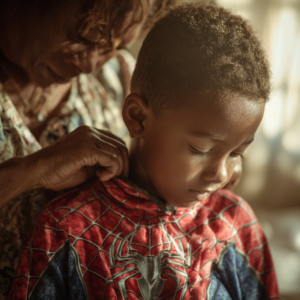Do you ever watch your child melt down halfway through trick or treating, wishing there was a magic spell for sensory overload? You’re not alone! For many families, Halloween brings excitement and stress—especially for parents of neurodiverse children.
At The Parenting Cipher, we believe advocacy starts at home, and every kid deserves holiday joy. So, let’s decode Halloween for neurodiverse kids tips together: how can you support your child while making memories, without the meltdowns?
Halloween promises costumes, candy, and giggles—but for many neurodiverse children, it’s a “sensory nightmare.” From scratchy fabrics and flashing lights to unpredictable noises and monsters in masks, the experience can trigger fight-or-flight reactions.
If your child covers their ears, refuses a costume, or just wants to stay home, remember: it’s not “bad behavior,” it’s their brain asking for safety.

Here are my tried-and-true strategies to help your child feel comfortable and included—whether they’re eager to trick-or-treat or need a cozy night in.
If the costume doesn’t feel good, the fun stops before it starts.
Personal tip: After years of unworn costumes, I learned to let my sons—both on the autism spectrum—be the final judges on comfort. For more costume tips check out Hopebridges suggestions.
Surprises = stress!
Warming up with smaller events before the chaos of October 31st can help kids adjust gradually.
Not all Halloween traditions fit every child—and that’s okay.

A little preparation goes a long way.
Predictability lowers anxiety.

Just because you aren’t knocking on every door doesn’t mean you’re missing out.
If your child is anxious, avoid saying, “There’s nothing to be scared about.” Instead, validate their feelings: “I know this is a lot because it’s dark and loud, but you’re safe with me.” Offer to walk up together, or let siblings pitch in. Safety starts with trust!
Remember, self-advocacy builds over years. My oldest didn’t confidently trick-or-treat alone until he was sixteen—and that’s totally okay.

Maybe your child prefers giving out candy, decorating pumpkins, or just watching from the window. Those memories count. Let go of “the perfect Halloween”—real magic is found wherever your child feels safe and happy.
Before you go, grab my Halloween Sensory Checklist (link in show notes)—a quick resource for calm, sensory-safe celebrations.
You’ve got this, parents! Your child’s comfort always comes first. However you celebrate, you’re rocking this neurodiverse parenting journey.
Want more support?